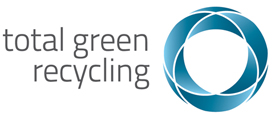This is the video you’ve been all waiting for! Hundreds of people have toured our facility this and past year. If you haven’t been one of them, this is your chance to join us for a virtual tour and learn what does the process of recycling e-waste look like.
We’re about to show you how 200,000 kilograms of e-waste gets recycled right here in this facility in Perth every single month.
Stage 1 – Sorting and segregating
The first stage of the e-waste recycling process starts with sorting and segregating the waste into different categories such as CRT televisions, flat-screen televisions, printers, computer peripherals, computers and out of scope product.
“Out of scope = electronic items not covered by the National Television and Computer Recycling Scheme”
Stage 2 – Weighing and presorting
After the sorting and segregation stage, e-waste is weighed on our industrial scales and then sent for presorting. In the presorting stage, we remove physical hazards such as batteries, ink and toner cartridges, lamps containing mercury and CRT glass to name a few. We also fully disassemble CRT televisions as they contain leaded glass which can be hazardous if shredded.
“CRT = cathode ray tube”
The CRTs are passed into our CRT separation container where we can recover leaded glass from non-leaded glass and the steel from the shadow mask within.
“A shadow mask is a metal plate punched with tiny holes that separate the coloured phosphors in the layer behind the front glass of the screen.”
After the material has been presorted and hazards and contamination have been removed the material is ready to enter our primary shredder.
Stage 3 – Primary shredding
During this process, the material will be shredded into large pieces which can be picked off easily by the staff on our picking line.
Stage 4 – Picking of contamination
The material then leaves the primary shredder and passes under an overband magnet.
This magnet collect material such as steel and ferrous items and passes it onto a picking line.
On the picking line staff pick off contamination, things that aren’t quite fully separated, so we have a clean steel product coming off the end of that line. The material that is picked off then passes back through the process until it separates properly.
Stage 5 – Secondary shredding and hammermill
The remaining material then passes into the secondary shredder and hammermill. Where it is further reduced in size and liberated from one another. Any pieces of aluminium still stuck to plastic will be separated in this stage.
Stage 6 – Ferrous metals removal
The material then passes onto a drum magnet for any ferrous metals that were still embedded in plastic prior to liberation are removed.
Stage 7 – Removal of conductive materials
The material then enters the Eddy current separator where magnetic induction forces are used to separate materials that conduct electricity from materials that don’t.
Stage 8 – Glass and ceramics removal by a trommel
The material that remains and was not ejected from the Eddy current separator then passes onto our trommel where glass and ceramics can be removed.
Stage 9 – Optical sorting
From there the material passes onto our optical sorter where we can further remove contaminants such as circuit boards and copper wire from our plastic stream.
This brings us to the end of the process. We have effectively recovered valuable materials that contain within e-waste and we have also isolated the hazards present.
Refinement and manufacturing
The hazardous materials that we’ve recovered are sent off for further refinement by companies such as Nyrstar in Port Pirie. And valuable materials can then be sold and used in manufacturing processes to make new products.
#cleanyourdraw
Total Green are capable of recycling double the amount we currently receive. So clean up your draws and find your nearest drop-off location.
If you’d like to see the process with your own eyes, come for a tour.
Don’t forget to share this video and send us any questions about e-waste you may have!

Woah , that’s such a great thing of you of sharing the knowledge, I really liked to learn about it.
Thanks Rohit, Feel free to watch our other educational videos in our library: https://www.totalgreenrecycling.com.au/video-library/
Wunnerphul e-education!
Does #cleanyourdraw mean clean your drawers? Maybe it’s just phonetic spelling of a ‘strain’ word.
Ha ha yes, English is a second language for some of our past blog writers. Definitely clean your drawers, not your draws.